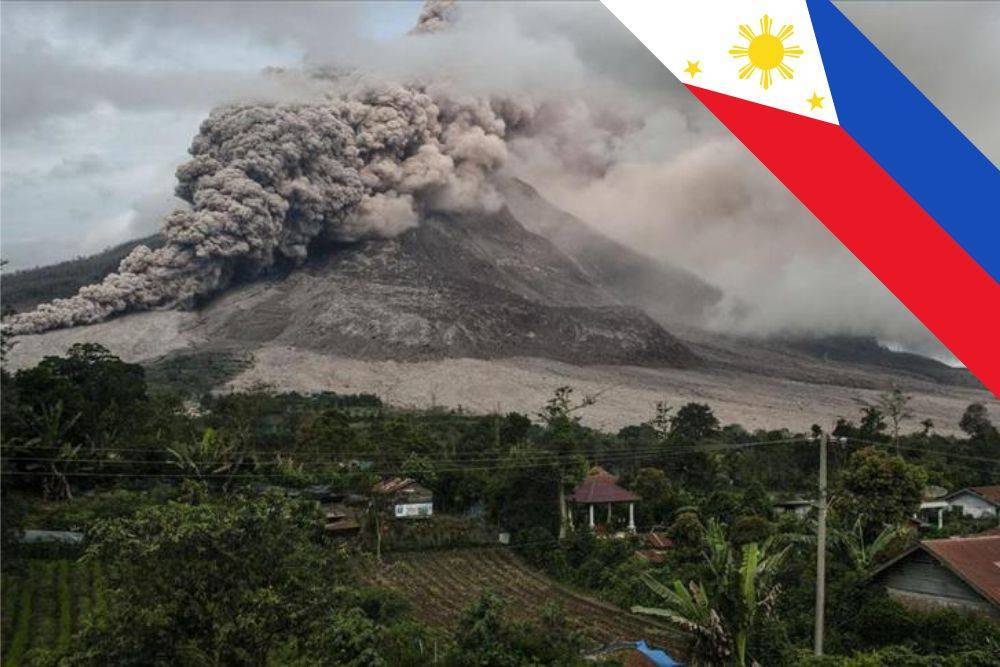On June 8, 2024, the Philippine Institute of Volcanology and Seismology (Phivolcs) reported a significant rise in sulfur dioxide emissions from Kanlaon Volcano, reaching 4,397 tons per day.
This elevated level of emissions signals heightened volcanic activity, necessitating Alert Level 2. This warning highlights potential explosive eruptions and restricts access to the volcano’s 4-kilometer radius.
Immediate Health Risks in La Carlota City
The eruption on June 3 led to severe sulfur contamination of water supplies in La Carlota City, particularly affecting the barangays of Ara-al and San Miguel. High sulfur levels in the water have made it unsafe for consumption, posing significant health risks. Over 500 households have been impacted, leading to the implementation of water rationing. The La Carlota Water District has been distributing clean drinking water to mitigate the crisis.
Respiratory and Other Health Issues
Residents in affected areas, including Bacolod City, have reported respiratory issues due to the pervasive sulfur smell. Sulfur dioxide is a known respiratory irritant, and prolonged exposure can lead to severe respiratory conditions such as bronchitis and aggravate pre-existing respiratory diseases like asthma. Health authorities are on high alert, monitoring the situation closely and providing medical assistance to those affected.
Long-term Health Concerns
Long-term exposure to high levels of sulfur dioxide can have chronic health impacts. This includes the risk of developing respiratory diseases, cardiovascular problems, and other sulfur-related health issues. The local health departments are conducting assessments to understand the full scope of health implications and are preparing to manage potential long-term health crises.
Broader Environmental Health Impact
Agricultural Contamination
The sulfur contamination has also affected the agricultural sector. Ashfall has covered vast areas of farmland, including 23,000 hectares of sugarcane fields in Negros Occidental. This not only poses a threat to crop yields but also risks introducing sulfur into the food chain, which can have indirect health effects on the population consuming these products.
Air Quality Concerns
The sulfur dioxide emissions have significantly impacted air quality in the surrounding regions. Poor air quality can exacerbate respiratory conditions and lead to an increase in hospital admissions for respiratory issues. Vulnerable populations, such as children, the elderly, and those with pre-existing health conditions, are at higher risk of adverse health effects due to deteriorating air quality.
Response and Mitigation Efforts
Government and Health Authorities’ Actions
The local government and health authorities are actively responding to the crisis. Emergency measures include the distribution of clean water, provision of medical supplies, and deployment of health workers to monitor and assist affected populations. Public health advisories have been issued, urging residents to stay indoors, use masks, and avoid consuming contaminated water.
Community Involvement
Community efforts are also crucial in managing the health impacts of the eruption. Local volunteers are assisting in the distribution of clean water and raising awareness about the health risks associated with sulfur dioxide exposure. Schools and community centers are being used as temporary shelters and distribution points for aid.
Strengthening Monitoring and Response Systems
Phivolcs and health authorities are working together to strengthen monitoring systems for early detection of increased volcanic activity and sulfur emissions. Improved response protocols and better-equipped emergency services are being put in place to handle future eruptions more effectively.
Public Health Education
Ongoing public health education campaigns aim to inform residents about the risks of sulfur dioxide exposure and the importance of adhering to safety advisories. These campaigns are crucial in ensuring that the population is well-prepared and can take necessary precautions during volcanic activity.
Conclusion
The health impact of the Kanlaon Volcano eruption, particularly the sulfur contamination, poses significant immediate and long-term health risks. Continuous monitoring, effective response measures, and public health education are essential to mitigate these risks. Authorities and communities must work together to ensure the safety and well-being of those affected by this natural disaster.
Photo Credit: AA.com.tr
Have a pressing question for a doctor? Medical Channel Asia has launched a community forum page where you can get questions answered by a medical specialist. Visit the community forum here.

